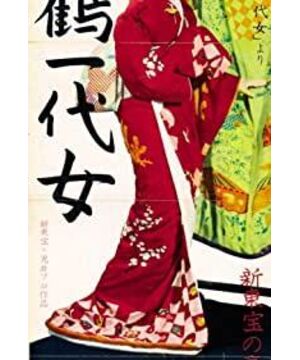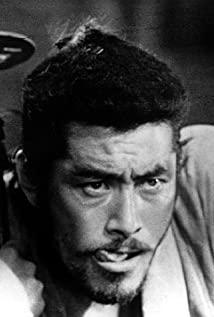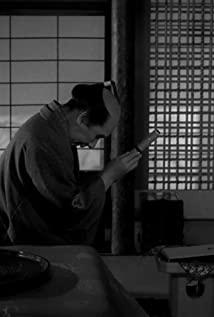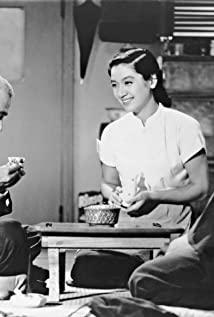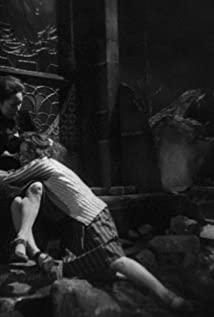In terms of themes, Mizoguchi Kenji, known as the "female film master", of course mainly focuses on Japanese women in his works. Most of the women in his pens have had a rough life of grievances. His themes are often to describe how they face difficulties under harsh objective circumstances, how to maintain the principles of female virtues in difficult situations, and even for their families or loved ones. Sacrifice yourself and perfect others. For example, Achun, the "Xihe Generation Girl", met countless men in her life. Some loved her deeply, some were greedy for her beauty, some took advantage of her, and even her father used her as a tool to make money and sold her to her. The brothel is a geisha. In short, she has been at the mercy of men throughout her life, but she has not forgotten the principles and dignity of women because of these encounters. In addition, in "Rainy Moon Story", the wives of the two male protagonists both sacrificed themselves because of their husband's desires. One became a prostitute, and the other was killed by a samurai. The dead soul of the slain wife still protected her son at home, waiting for her husband's return, and finally let her wait until that day. The theme he wanted to express was the feudal society, how war and men made Japanese women feel wronged, but their unyielding spirit was firmly supported.
In Kurosawa's films, women are rarely described. The women in his works are different from those described by Mizoguchi. The women in his works are more of the dark side of human nature. For example, in "Rashomon," the wife of the samurai hopes that the robber who raped her would kill her husband. This kind of female description rarely appears in Mizoguchi's works. And this dark side and weakness of human nature are exactly the themes that Kurosawa loves, such as "Heaven and Hell." The theme discussed in the movie is how a person makes money and moral decisions. At first, the protagonist Mifune Toshiro was willing to give up the opportunity of becoming a business owner for his kidnapped son, and exchanged 30 million yen for his son's safety. When he knew that the kidnapped was the son of his driver, he began to fight, and human selfishness began to appear, because after all, it was someone else's son. In "Rashomon", human weakness and lies run through the entire story. Each character in the story conceals some of the facts because of their reputation and safety, so everyone has a different version of the confession. In the end, no one knows the facts. What is it? In addition, in "Seven Heroes and Four Righteousnesses", there are also descriptions of the weakness of the samurai. For example, the young Katsushiro developed a relationship with a woman who was born in a peasant because of his uncontrollable desire. The people in his writings are not perfect, they all have their own weaknesses. The only difference is that some people will actively seek change and become more sentimental people, while some people will abandon the principle because of selfish desires, such as in "Spider's Nest City." The samurai of the war murdered the lord because of selfish desire, and was eventually punishable by others. In Kurosawa's eyes, a samurai who violated the spirit of Bushido will never end well. On the contrary, if a fake samurai acts in accordance with the spirit of Bushido, he can be respected and become a real samurai. For example, Kiku Chiyo in "Seven Heroes and Four Righteousnesses" is an outright pretending to be a samurai.
He is the son of a peasant, but he is resourceful, brave and good at fighting, and he is even better than a real samurai. Samurai, so Katsushiro stuck a samurai sword in his grave in the same way as a samurai. This is precisely the Bushido spirit that Kurosawa Akira often advocates. As long as he has a samurai-like sentiment, no matter how humble he comes from, he can become an out-and-out samurai.
Mizoguchi's movies do not have Kurosawa Akira's Bushido, and the samurai in Mizoguchi's eyes are not very positive, such as the samurai who raped the protagonist's wife in "Agetsu Monogatari" and the samurai who killed the wife of another protagonist. Bushido is the same spirit that does not exist in his eyes. On the contrary, there is a strong sense of Buddhism and Confucianism in his works. Take "Doctor Sansho" as an example. The small Buddha statue (passed by his father to the chef) in the film has an important meaning throughout the film. It is "kind heart" and is the compassion of Buddhism. This little Buddha represented the father to pass the compassionate heart to the son of the chef. When the son forgot the importance of this kindness, the son threw it away and his sister picked it up. When the son regained his kind heart, he He regained the little Buddha statue again. Later, the Buddha received the doctor's help and allowed his mother to recognize him. All good things are accomplished by this Buddha statue. In addition, Ah Chun, who is a "female generation of Xihe", also entered Buddhism in his later years before he had taken charge of his life, and no longer allowed others to control his destiny. And Genjuro, one of the protagonists of "Rain Moon Story", who was fascinated by ghosts, awakened because of the help of the monks. All of them were born alive because of the Buddha, which just shows that their works are permeated with Buddhist ideas. Confucianism appears in the "Yuyue Story" because the idea of "safe and happy, contented and happy" is one of the centerpieces of the film. Therefore, Buddhism and Confucianism are also one of the most representative themes of Mizoguchi. The works of the two directors have their own themes. The same is that they all focus on expressing the spirit of Eastern culture, but Kurosawa has more Westernized ideas, such as humanitarianism. Mizoguchi focuses on promoting traditional Eastern culture, theory and spirit, and even art (such as Noh drama).
In terms of aesthetics, the standards and policies of the two are different. Kurosawa pursues the tension and contradiction of drama, while Mizoguchi focuses on artistic conception and realism. So the two are very different in camera, storyboard, editing and soundtrack. Kurosawa likes to use a lot of very short shots to explain a scene. For example, in the scene of the "Rashomon" woodman entering the forest, there is nothing special in the plot, but the woodman walks slowly into the forest by himself, using 16 different shots. The combination is composed of different sizes of shots, and the quick editing makes this simple clip feel dazzling. For the first time in the final battle of "Seven Heroes and Four Righteousnesses", multiple cameras were used to shoot at the same time to capture the mighty battle, the courage of the samurai and the conflict between the characters. And make good use of close-ups, with rhythmic editing, powerfully cut the camera into a dramatic battle.
Although Mizoguchi's film does not have many close-ups and fast editing, it can still enhance the effect with its unique long-shot style. Mizoguchi always likes to shoot with "one scene, one shot". Although there is only one shot, it is still full of appeal. For example, in "Agetsu Monogatari", Genjuro's wife and son are in trouble when they are in trouble. The camera first saw the wife and son on the road, and then saw the thief enter the camera to grab food, and then another person took a spear into the camera and stabbed the wife. The wife fell to the ground, the culprit left, the camera went up, the wife insisted on going on the road, and See the food robbed by the culprits in the background. In this scene, there is no close-up of the stabbing, and no close-up of the wife’s pain, but it is still powerful. At the last shot, the wife is in the foreground, and the food is divided among the culprits in the background. This combination clearly describes the wife’s miserable experience. And helpless. The knot with a panoramic mirror not only strengthens the insignificance of people, but also strengthens their sense of reality. The audience is just like spectators watching the tragedy happen. In addition to the appeal of his long shots, it also breaks the principle that the long shots strictly adhere to the unity of narrative space, because his long shots often have spatial changes. Take "Yueyue Monogatari" as an example. In the movie, Genjuro returns to the sound stage to find his wife and son. Only one shot was used in that scene. The camera was inside the house and saw Genjuro enter the house. No one in the house was very desolate. He went to the backyard and continued to look for it. From the two windows, the camera saw him circle outside and returned to the opening door. The house was brighter than before because his wife was cooking in front of the stove. This scene is actually a combination of reality and illusion, where the space is different, but a long lens is used to shoot. Someone pointed out that this shot was taken twice, but I couldn't see the flaws. All in all, he wanted to take a long lens to shoot this scene from reality to illusion. Furthermore, Mizoguchi also injected the elements of traditional Japanese silk scroll painting into the film and appeared in his long shots. For example, when shooting a large yard, it is shot with a horizontally shifted lens. After passing through a room, there are incidents happening, like a silk scroll painting slowly unfolding. And every time the camera moves will be driven by the actor, and whenever the actor comes close to the camera, the camera will move backward, so that the actor will not occupy the screen. This kind of fact came naturally, and it was very rich, and Mizoguchi kept arranging actors in and out of the scene, so that new things appeared in the scene constantly.
Kurosawa also makes good use of the actor's position, but the difference from Mizoguchi is that Kurosawa will place the actor closer to the camera, allowing him to occupy the engagement part of the picture to highlight his expression and drama. He will also make good use of the width of the picture, placing the characters with conflicting positions on the two sides of the picture, so that the intimacy between them is reduced and it becomes a state of opposition. These skills are played to the fullest in "Heaven and Hell". In addition, Kurosawa is also good at using different shooting techniques to highlight the character's character. For example, Doyomaru of "Rashomon" will use dynamic shots to highlight Doyomaru's vitality, passion and arrogance in his narration. When the woodman narrates, he uses a more objective three-person lens and a panoramic lens to shoot, because he is not the person involved, so as to highlight his objective authenticity.
In fact, the two film masters have many similarities and differences, one is strong and one is soft, one is fast and the other is slow, and both have their own characteristics. The language and technique of the film have a great influence on later generations. If you want to learn more about Japanese culture and movies, you must first get to know their movies.
View more about The Life of Oharu reviews


